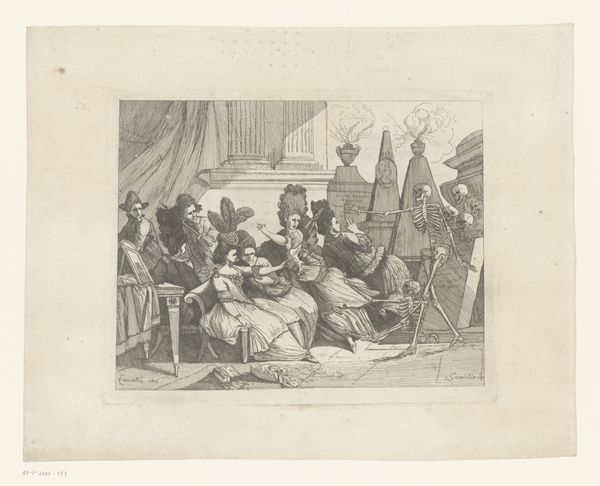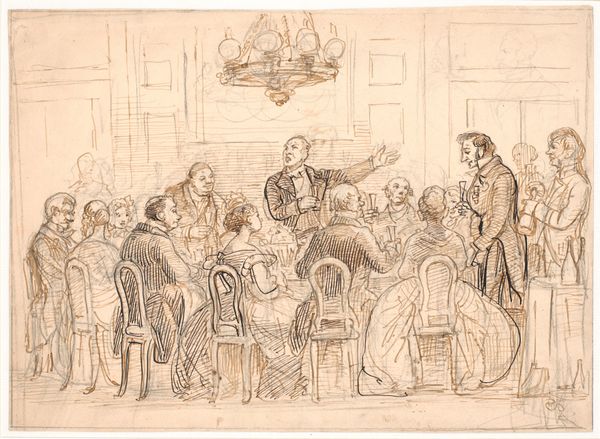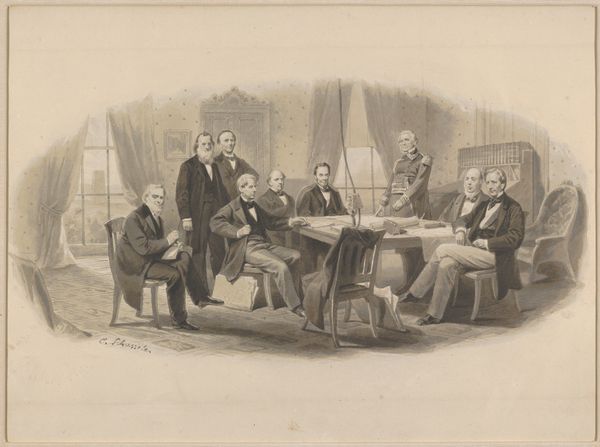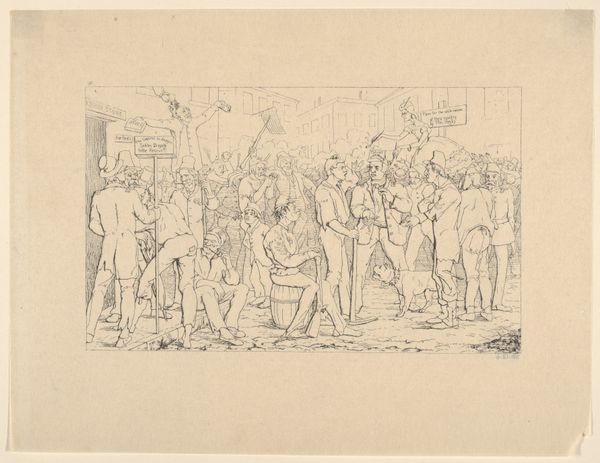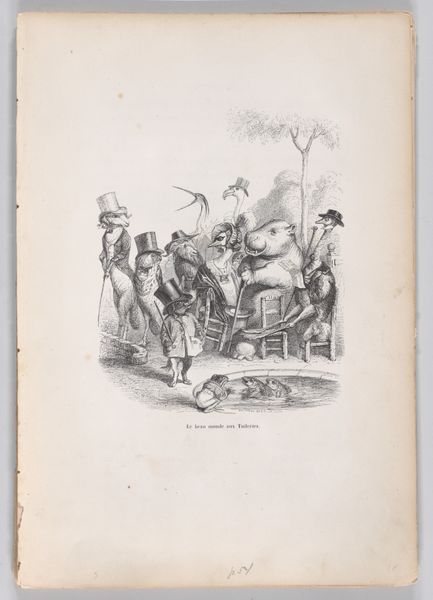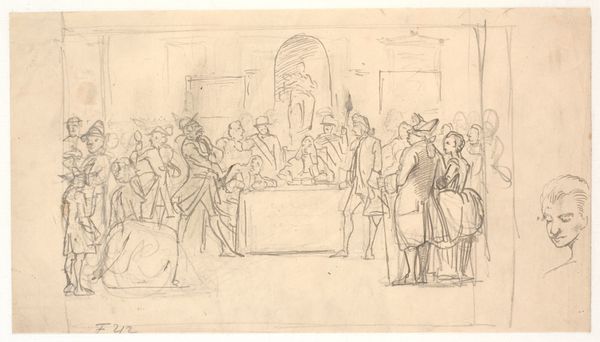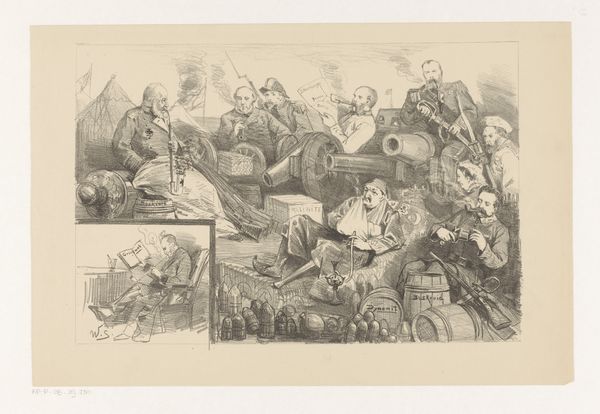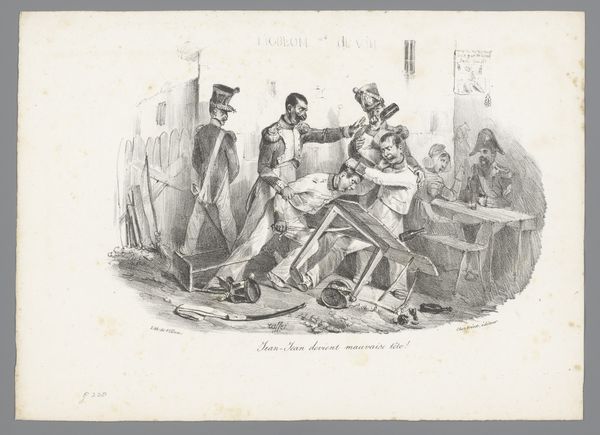
Fotomontage: het bestuur van Arti ontvangt een deputatie uit Timboektoe in verband met een buitenlandse tentoonstelling c. 1890 - 1900
0:00
0:00
Dimensions: height 62 mm, width 77 mm
Copyright: Rijks Museum: Open Domain
Editor: So, this photomontage by Machiel Hendricus Laddé, created around 1890 to 1900, depicts ‘Het bestuur van Arti ontvangt een deputatie uit Timboektoe in verband met een buitenlandse tentoonstelling’ - a delegation from Timbuktu visiting an art association. It's rendered in ink, pencil, and colored pencil on paper, and what immediately strikes me is how satirical and a bit unsettling it feels. How do you interpret this work? Curator: This photomontage functions as a powerful commentary on colonialism and representation, doesn't it? It's not just a funny image but rather a critical visual statement about power dynamics. Laddé places the delegation from Timbuktu—represented through very stereotypical and arguably racist caricatures—in stark contrast with the formal, "civilized" setting of the art association’s meeting room. Editor: That’s a really astute point about the contrast. The crocodile really emphasizes that, doesn’t it? But do you think that Laddé himself was critical of colonialism, or was he simply reflecting the prevailing views of the time? Curator: That's the crucial question. The photomontage undoubtedly utilizes the visual language of its era, including problematic depictions. However, the exaggeration and absurdity could be read as a critique of the very stereotypes it employs. Consider the title: "in verband met een buitenlandse tentoonstelling". What's being exhibited here? Authentic cultural exchange, or a curated, commodified version of Timbuktu? Editor: So, is Laddé perhaps forcing the viewer to confront their own prejudices? By exaggerating stereotypes, is he showing us how ridiculous they are? Curator: Exactly. It's a challenge. The work becomes less about Timbuktu itself and more about the European gaze—the way Europe sees, or *wants* to see, other cultures. It pushes us to think about what gets lost, and who gets exploited, in these representations. What did *I* see? My own historical positioning as a researcher? Editor: It’s fascinating how a seemingly simple image can unpack such complex issues of representation and power! Curator: Precisely! It makes us question the historical context but it's also relevant to contemporary discussions about cultural appropriation and the politics of display. It is not innocent.
Comments
No comments
Be the first to comment and join the conversation on the ultimate creative platform.
